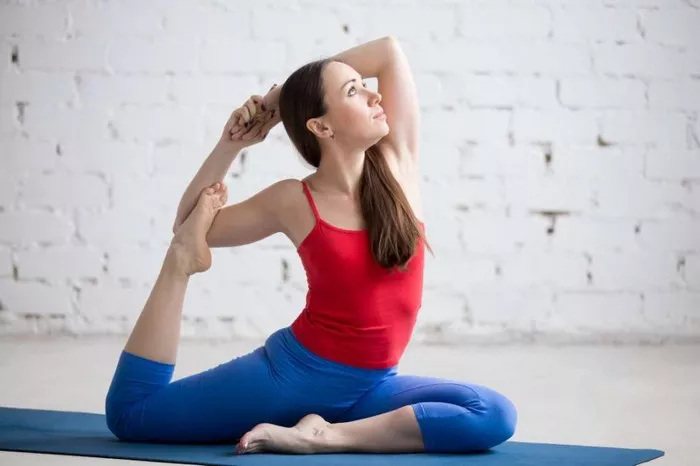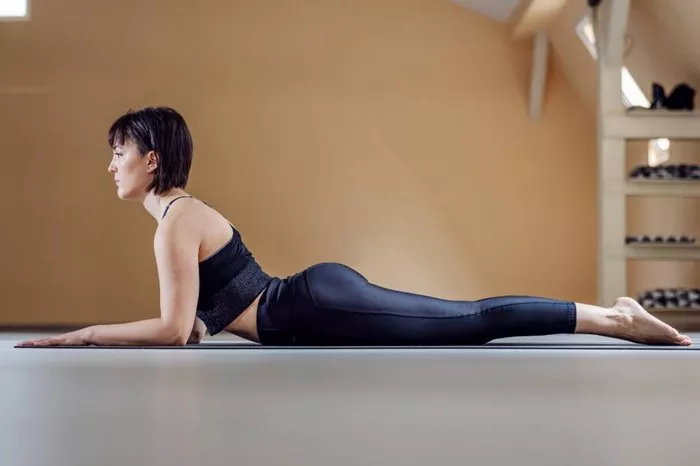Yoga, a practice that has evolved over thousands of years, has grown in popularity worldwide for its remarkable benefits to the mind, body, and spirit. With its diverse styles, from Hatha to Vinyasa and Ashtanga to Iyengar, yoga offers a wide range of poses or asanas that can help improve flexibility, strength, balance, and mental clarity. But have you ever wondered where these Yoga poses come from?
The history of yoga poses is deeply intertwined with ancient texts, philosophical teachings, and the practical needs of yogis (those who practice yoga). Understanding the origins of yoga poses requires a journey through time—from ancient spiritual texts like the Vedas and Upanishads, through the development of classical yoga, to the modern adaptations we see in contemporary practices today. In this article, we will explore the origins and evolution of yoga poses, their symbolism, and how they are connected to spiritual and physical practices.
1. The Spiritual Roots of Yoga
To understand where yoga poses come from, it’s essential to first explore the broader spiritual context of yoga. Yoga is not just about physical exercise; it is a spiritual discipline with roots in ancient India. Its primary aim is to unite the body, mind, and spirit. This union (or yuj in Sanskrit) is the root meaning of the word “yoga.”
The Vedas and the Birth of Yoga
The earliest mentions of yoga are found in the sacred texts of the Vedas, which were composed around 1500-1200 BCE. The Vedas are a collection of hymns and philosophical writings that form the foundation of Hinduism. Though the Vedas do not explicitly detail specific yoga poses, they introduce the concepts of meditation, concentration, and mental discipline—foundational aspects of modern yoga.
The earliest practice of yoga involved mental exercises, chants, and meditative practices designed to connect with the divine. The physical postures that are now central to yoga were not initially the focus of these practices but emerged later as a way to support the deeper spiritual work.
The Upanishads: The Role of the Body
The Upanishads, written between 800 and 400 BCE, delve deeper into the nature of the soul and the connection between mind and body. Here, yoga is presented as a path to self-realization and spiritual enlightenment. The body becomes a vehicle for reaching higher states of consciousness, which led to the development of specific practices to make the body more comfortable and stable during meditation.
Yoga poses, or asanas, began to emerge as tools to support prolonged sitting and meditation. Ancient yogis found that certain physical postures helped them maintain focus and stillness for longer periods of time, facilitating deeper meditative states.
2. The Classical Period: Patanjali and the Yoga Sutras
Around the 2nd century BCE, a sage named Patanjali compiled the Yoga Sutras, a key text that systematized the philosophy and practice of yoga. While the Yoga Sutras did not provide detailed descriptions of specific asanas, they emphasized the importance of physical discipline as part of the path to enlightenment.
In Patanjali’s framework, yoga is described as an eight-limbed path (Ashtanga Yoga), with asanas (postures) being one of these eight limbs. The physical practice of yoga was considered essential, not only for physical health but for mental and spiritual growth. This period marks the beginning of a shift toward a more structured practice, with a focus on creating a balanced and stable body to support spiritual awakening.
The Hatha Yoga Tradition
In the centuries following Patanjali’s work, the practice of yoga began to evolve, incorporating more physical postures, breathing techniques, and purification practices. By the 9th century CE, a new branch of yoga known as Hatha Yoga emerged, with the primary goal of preparing the body for meditation. Hatha Yoga emphasized physical postures to strengthen and purify the body, making it more capable of withstanding the long hours of meditation required for spiritual practice.
The key texts of the Hatha Yoga tradition, such as the Hatha Yoga Pradipika (15th century CE) and the Gheranda Samhita, describe various asanas in detail, many of which are still practiced today. These texts also explain how different poses impact the flow of energy in the body, aiming to balance the physical and energetic aspects of the practitioner.
Hatha Yoga introduced poses like Padmasana (Lotus Pose), Sirsasana (Headstand), and Sarvangasana (Shoulder Stand), all designed to open energy channels, improve flexibility, and support the practitioner’s meditation.
3. The Evolution of Yoga Poses
As yoga spread across India and the world, it continued to evolve. Different schools of thought, traditions, and teachers contributed to the development of new poses and variations of existing ones. The rise of different regional practices and the expansion of yoga to the West led to a significant shift in the practice of asanas.
The Influence of Krishnamacharya
One of the most influential figures in the development of modern yoga as we know it today is T. Krishnamacharya (1888-1989). Known as the father of modern yoga, Krishnamacharya was instrumental in popularizing yoga in the 20th century. His teaching was a fusion of traditional Hatha Yoga with modern needs, and he developed a style that incorporated a dynamic flow of movement.
Krishnamacharya trained several well-known students, including Pattabhi Jois (who went on to develop Ashtanga Yoga) and B.K.S. Iyengar (founder of Iyengar Yoga). Krishnamacharya’s contributions were critical in shaping the modern practice of yoga, which places a significant emphasis on linking breath with movement, thus introducing dynamic asanas such as Sun Salutations (Surya Namaskar).
His teachings emphasized the therapeutic benefits of yoga poses, leading to the development of poses that were designed to target specific physical conditions. This gave rise to variations and modifications of traditional asanas that are still practiced today in many yoga classes.
Modern Innovations and Adaptations
In the 20th and 21st centuries, yoga became increasingly accessible to a broader audience, which led to new interpretations and innovations in yoga poses. Today, yoga classes may include poses that emphasize physical fitness, stress relief, or injury rehabilitation, often blending styles like Hatha, Vinyasa, and Power Yoga.
Yoga poses like Downward Dog (Adho Mukha Svanasana), Warrior Pose (Virabhadrasana), and Tree Pose (Vrksasana) are now practiced around the world, each carrying its unique history and significance. Many of the more common postures derive from ancient Hatha Yoga texts, but modern yoga continues to adapt these poses for a wide range of practitioners, from beginners to advanced.
4. Symbolism and Meaning Behind Yoga Poses
Each yoga pose carries a deeper symbolic meaning, rooted in spiritual and philosophical traditions. Many of the names of yoga poses are derived from Sanskrit and are inspired by animals, nature, or divine figures, which reflect the spiritual connection between the body and the natural world.
Animal Poses
Several well-known yoga poses are named after animals, such as Cobra Pose (Bhujangasana), Cat-Cow Pose (Marjaryasana-Bitilasana), and Cow Face Pose (Gomukhasana). These animal poses symbolize qualities that practitioners aim to embody. For example, the Cobra Pose opens the chest and encourages a sense of pride and strength, just like the raised hood of a cobra.
Similarly, poses like Downward Dog and Camel Pose (Ustrasana) embody characteristics of animals that practitioners aspire to, such as strength, flexibility, and groundedness.
Nature Poses
Many yoga poses are inspired by the natural world. Tree Pose (Vrksasana) is a classic example, embodying the stability and rootedness of a tree. By standing on one leg, practitioners are encouraged to balance, focusing on their breath and connecting with their inner stability.
Other poses, like Mountain Pose (Tadasana) and Lotus Pose (Padmasana), represent the grounding forces of nature and the potential for spiritual growth. The names and gestures in these poses call attention to the qualities inherent in nature—strength, growth, and serenity.
Divine Figures
In many yoga poses, there is also a connection to divine figures in Hindu mythology. Warrior Pose (Virabhadrasana) honors the fierce and powerful warrior Virabhadra, while Goddess Pose (Utkata Konasana) calls upon the strength and grace of the goddess.
These divine references are intended to inspire practitioners to embody the virtues of the gods and goddesses, such as power, compassion, and wisdom, fostering a deeper connection to both the physical and spiritual aspects of yoga.
5. Yoga Poses and Their Functions
Yoga poses are designed not only for physical benefits but also for mental and emotional healing. Each pose targets specific areas of the body and mind, helping to improve posture, relieve stress, and enhance overall well-being.
Flexibility and Strength
Yoga poses like Downward Dog, Triangle Pose (Trikonasana), and Forward Fold (Uttanasana) stretch and strengthen the body’s muscles, improving flexibility and balance. These poses release tension in the muscles, increasing circulation and mobility.
Strength-building poses, such as Plank Pose (Phalakasana) and Chaturanga Dandasana, engage core muscles and build overall strength, while balancing poses like Tree Pose and Warrior III (Virabhadrasana III) help to develop coordination and body awareness.
Stress Relief and Mental Clarity
Yoga also has profound benefits for mental health. Poses such as Child’s Pose (Balasana), Corpse Pose (Savasana), and Legs-Up-the-Wall Pose (Viparita Karani) promote relaxation and stress reduction. These poses activate the parasympathetic nervous system, triggering the body’s relaxation response and encouraging a sense of peace and calm.
Breathing exercises (pranayama) incorporated with these poses enhance their calming effects, further helping practitioners to clear their minds and focus on the present moment.
Therapeutic Benefits
Many modern yoga practices incorporate poses designed to address specific therapeutic needs. For example, Cat-Cow Pose helps to improve spinal flexibility and alleviate back pain, while Seated Forward Fold can help stretch tight hamstrings and ease tension in the lower back.
Restorative poses like Supported Bridge Pose (Setu Bandhasana) and Reclining Bound Angle Pose (Supta Baddha Konasana) are used in therapeutic yoga to support healing, particularly in those recovering from injury or dealing with chronic pain.
Conclusion
Yoga poses are more than just physical movements—they are gateways to spiritual growth, emotional healing, and physical vitality. Whether inspired by animals, nature, or divine figures, each asana carries a deep significance that reflects the interconnectedness of body, mind, and spirit. From the Vedic texts to modern-day adaptations, yoga poses have evolved alongside our understanding of the body and the path to inner peace.
As yoga continues to grow and evolve, the wisdom of the ancient yogis remains present in every posture, reminding us that the journey of yoga is both an exploration of the self and an expression of universal truths. So the next time you step onto your mat, take a moment to appreciate not only the physical benefits but also the ancient origins and deeper meanings behind each yoga pose.
Related Topics:





















